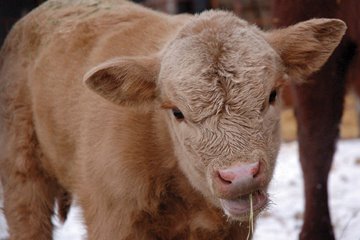In a year of sky-high costs, cattle producers know every cent counts when it comes time to market calves. How can you maximize the price your calves bring at sale time?
University of Nebraska Extension beef specialist says the key is in reviewing the basics and paying attention to details.
He says, “Producers should aim to do all they can to improve the income on their calves.”
Rush’s first reminder is to sell in uniform load lots. “They sell at a premium to smaller groups of calves,” says Rush. For small producers, this may require finding ways to pool calves into load lots or work with partnerships to help find good marketing options.
Second, he reiterates that preconditioning pays – but it needs to be well-documented. Rush says documentation should include everything from calves receiving colostrum at birth to recording their pre-weaning vaccinations, and then backgrounding calves for 45 days prior to selling.
Age and source verification have been getting mixed reviews in how much value they might add to calves. Rush believes the value is there, but says to capitalize on it sellers must seek a market ahead of time for those calves. “Find buyers interested in it ahead of time,” he says.
Other basics that can help add to the selling price include dehorning, castrating, and paying attention to fill and shrink. “These details all become even more important in years like this,” says Rush.
Think About Weaning Tactics
Additionally, to help save pastures and retain cow condition, Rush says early weaning is still an option this year.
He admits that grain costs may make it expensive to wean and feed calves early, but points out that research has shown those calves gain well and can produce quality and marbling benefits that may make up for the cost. Likewise, early weaning will allow the cow to maintain condition, which can cut winter feed costs and can help maintain reproductive rates.
Along with early weaning, Rush stresses that fenceline weaning should be considered by producers because it causes less stress on calves. Ultimately, that means calves stay healthier, and go on feed sooner, so they perform better.
To fenceline wean, cows are kept in one pasture, while calves are kept in a neighboring pasture. A good woven wire fence between the two is usually sufficient to keep the groups separate. A set of bunks in among the calves, helps get them bunk broke in a matter of days. Research has shown fenceline weaned calves –with their mamas in the pen next to them – spent more time eating and less time bawling, while hard weaned calves spent more time walking.
Should you choose to go the early weaning route, Rush stresses that the calves diet should be 16% crude protein to start, and can be dropped down to a lower percent once calves get bigger.
An Ohio State University study examined the possible advantages of pasture-weaning calves with contact to their dams. Three weaning strategies were investigated: 1) weaned directly onto the truck, 2) weaned 30 days before trucking and confined in drylot, 3) weaned 30 days before trucking and pastured with fence-line contact with their dams.
Steers from the drylot weaning strategy lost 1.32 lb/day the first week in the feedlot, whereas steers from the truck weaning and pasture–weaning treatments gained 1.1 lb/day and .88 lb/day, respectively. Body weight gain in the subsequent 3 weeks was similar among treatments.
However, the differences in the first week upon arrival in the feedlot were enough to impact overall gain of truck and pasture-weaned calves compared to drylot-weaned calves during the entire 4-week feedlot arrival period.Weaning effects on incidence of calf sickness also were detected. Only 15% of the pasture weaned calves required treatment for respiratory disease. This incidence was doubled for truck-weaned calves and nearly 2.5 times greater for calves weaned in drylot.
- with permission from
Welcome to the Online Edition of Cattle Country!
Updated with every new issue
Past issues will be available in the archive. If you are interested in reading Late Breaking News between paper deadlines, scroll down to the bottom of the page. The most recent information will be posted first.
Past issues will be available in the archive. If you are interested in reading Late Breaking News between paper deadlines, scroll down to the bottom of the page. The most recent information will be posted first.

Monday, October 6, 2008
Subscribe to:
Post Comments (Atom)

No comments:
Post a Comment